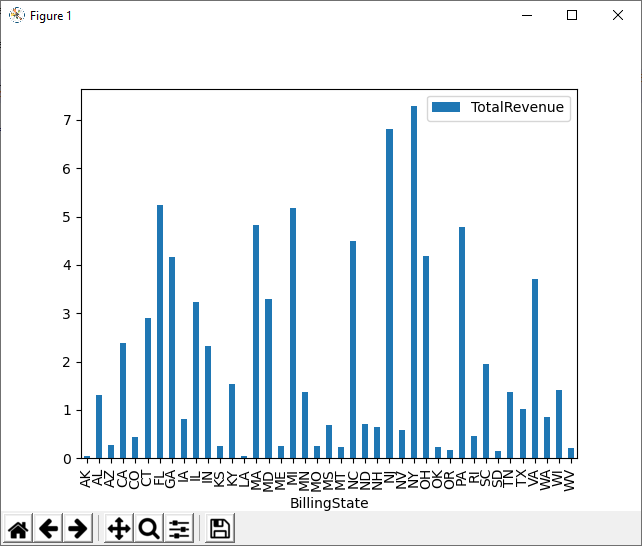Discover how a bimodal integration strategy can address the major data management challenges facing your organization today.
Get the Report →How to Visualize JSON Data in Python with pandas
Use pandas and other modules to analyze and visualize live JSON services in Python.
The rich ecosystem of Python modules lets you get to work quickly and integrate your systems more effectively. With the CData Python Connector for JSON, the pandas & Matplotlib modules, and the SQLAlchemy toolkit, you can build JSON-connected Python applications and scripts for visualizing JSON services. This article shows how to use the pandas, SQLAlchemy, and Matplotlib built-in functions to connect to JSON services, execute queries, and visualize the results.
With built-in optimized data processing, the CData Python Connector offers unmatched performance for interacting with live JSON services in Python. When you issue complex SQL queries from JSON, the driver pushes supported SQL operations, like filters and aggregations, directly to JSON and utilizes the embedded SQL engine to process unsupported operations client-side (often SQL functions and JOIN operations).
Connecting to JSON Services
Connecting to JSON services looks just like connecting to any relational data source. Create a connection string using the required connection properties. For this article, you will pass the connection string as a parameter to the create_engine function.
See the Getting Started chapter in the data provider documentation to authenticate to your data source: The data provider models JSON APIs as bidirectional database tables and JSON files as read-only views (local files, files stored on popular cloud services, and FTP servers). The major authentication schemes are supported, including HTTP Basic, Digest, NTLM, OAuth, and FTP. See the Getting Started chapter in the data provider documentation for authentication guides.
After setting the URI and providing any authentication values, set DataModel to more closely match the data representation to the structure of your data.
The DataModel property is the controlling property over how your data is represented into tables and toggles the following basic configurations.
- Document (default): Model a top-level, document view of your JSON data. The data provider returns nested elements as aggregates of data.
- FlattenedDocuments: Implicitly join nested documents and their parents into a single table.
- Relational: Return individual, related tables from hierarchical data. The tables contain a primary key and a foreign key that links to the parent document.
See the Modeling JSON Data chapter for more information on configuring the relational representation. You will also find the sample data used in the following examples. The data includes entries for people, the cars they own, and various maintenance services performed on those cars.
Follow the procedure below to install the required modules and start accessing JSON through Python objects.
Install Required Modules
Use the pip utility to install the pandas & Matplotlib modules and the SQLAlchemy toolkit:
pip install pandas pip install matplotlib pip install sqlalchemy
Be sure to import the module with the following:
import pandas import matplotlib.pyplot as plt from sqlalchemy import create_engine
Visualize JSON Services in Python
You can now connect with a connection string. Use the create_engine function to create an Engine for working with JSON services.
engine = create_engine("json:///?URI=C:/people.json&DataModel=Relational")
Execute SQL to JSON
Use the read_sql function from pandas to execute any SQL statement and store the resultset in a DataFrame.
df = pandas.read_sql("SELECT [ personal.name.first ], [ personal.name.last ] FROM people WHERE [ personal.name.last ] = 'Roberts'", engine)
Visualize JSON Services
With the query results stored in a DataFrame, use the plot function to build a chart to display the JSON services. The show method displays the chart in a new window.
df.plot(kind="bar", x="[ personal.name.first ]", y="[ personal.name.last ]") plt.show()

Free Trial & More Information
Download a free, 30-day trial of the CData Python Connector for JSON to start building Python apps and scripts with connectivity to JSON services. Reach out to our Support Team if you have any questions.
Full Source Code
import pandas
import matplotlib.pyplot as plt
from sqlalchemy import create_engin
engine = create_engine("json:///?URI=C:/people.json&DataModel=Relational")
df = pandas.read_sql("SELECT [ personal.name.first ], [ personal.name.last ] FROM people WHERE [ personal.name.last ] = 'Roberts'", engine)
df.plot(kind="bar", x="[ personal.name.first ]", y="[ personal.name.last ]")
plt.show()






